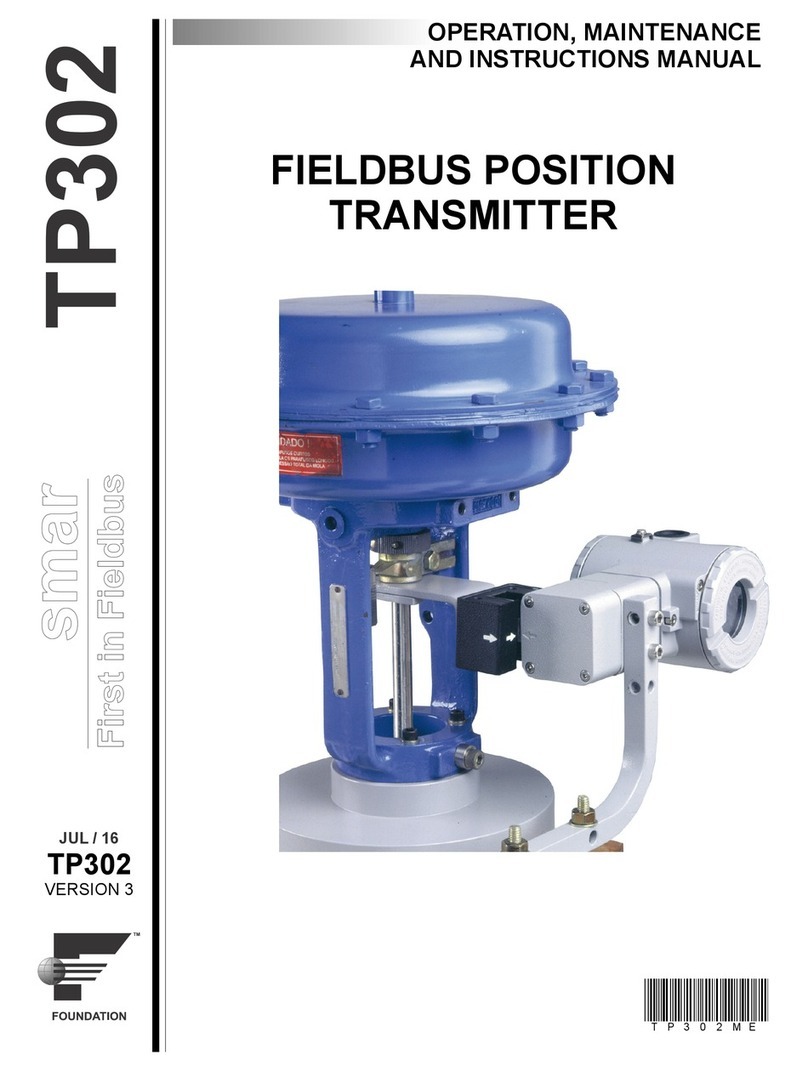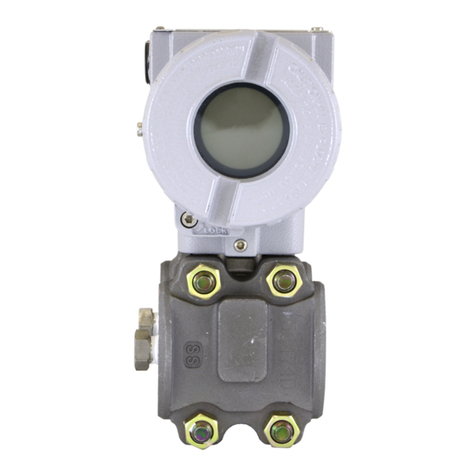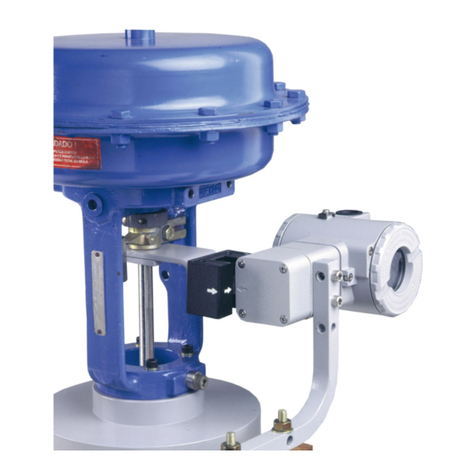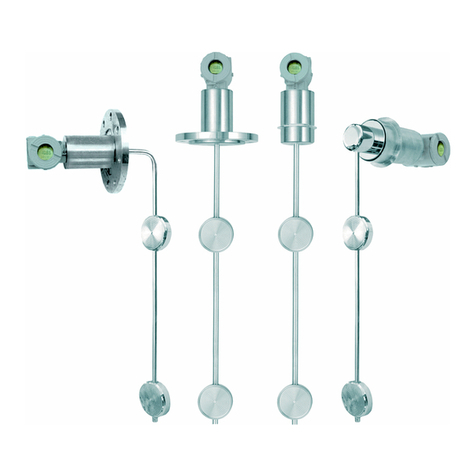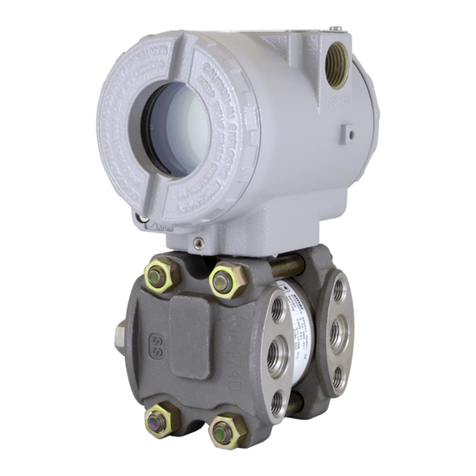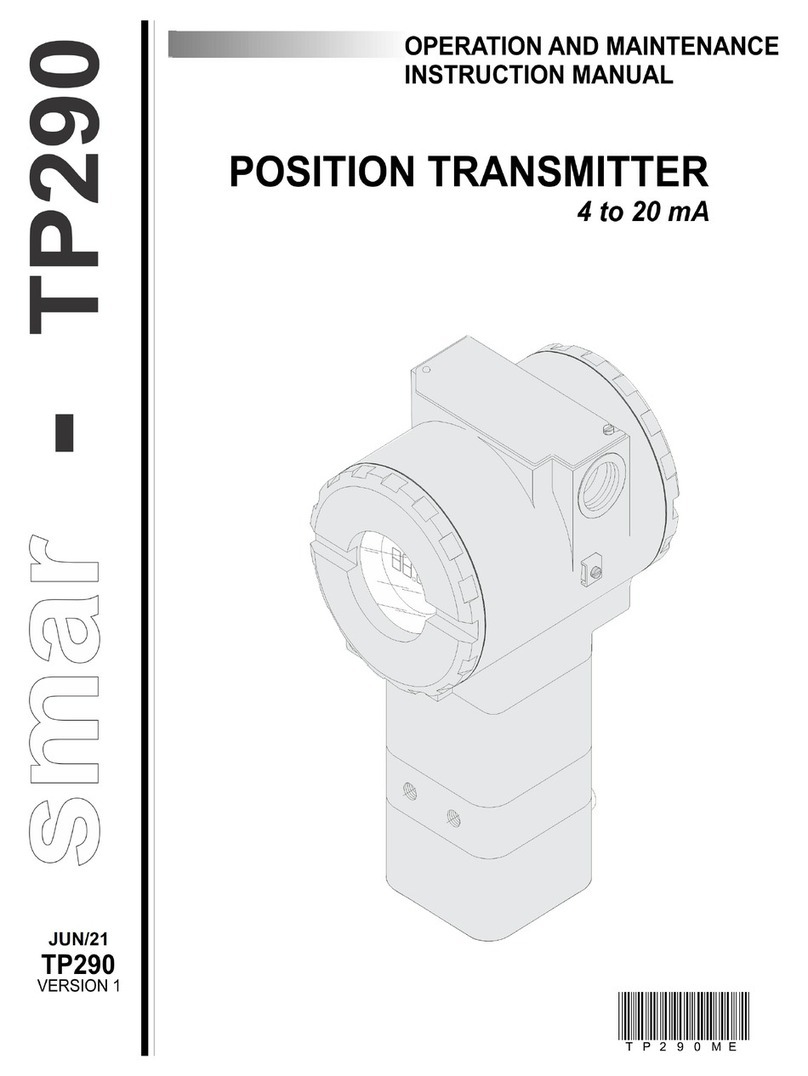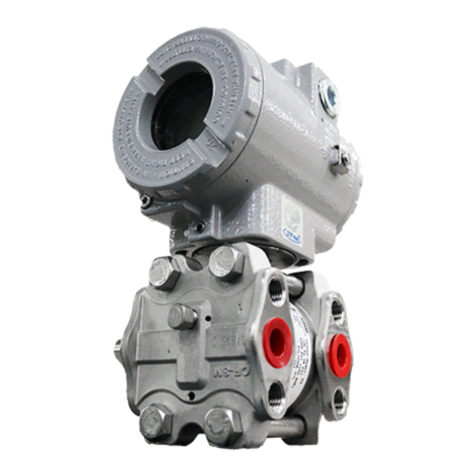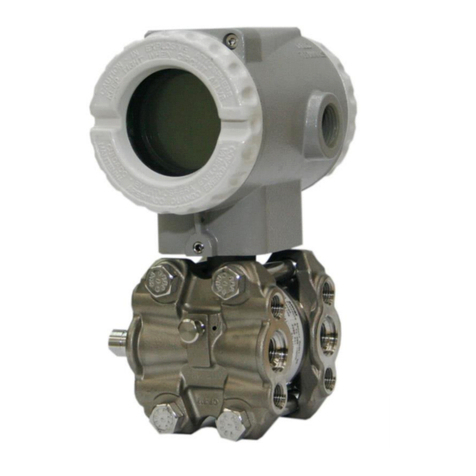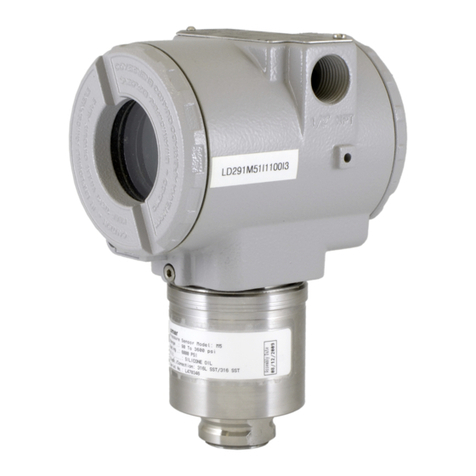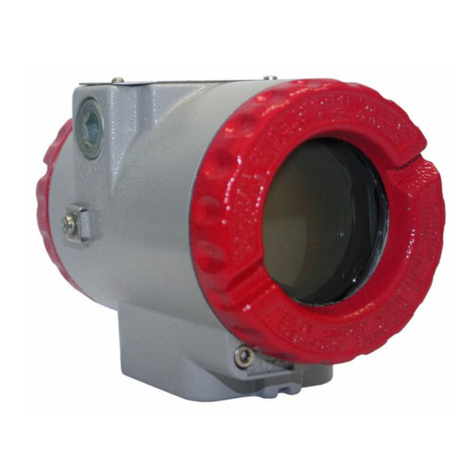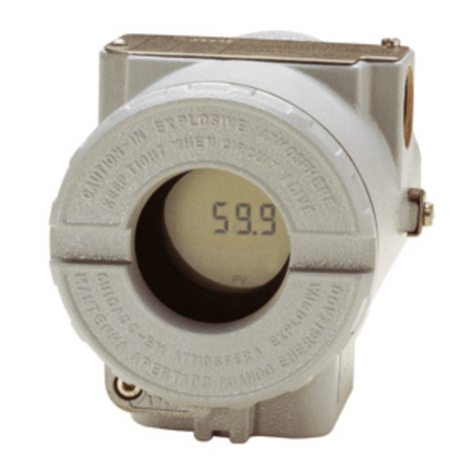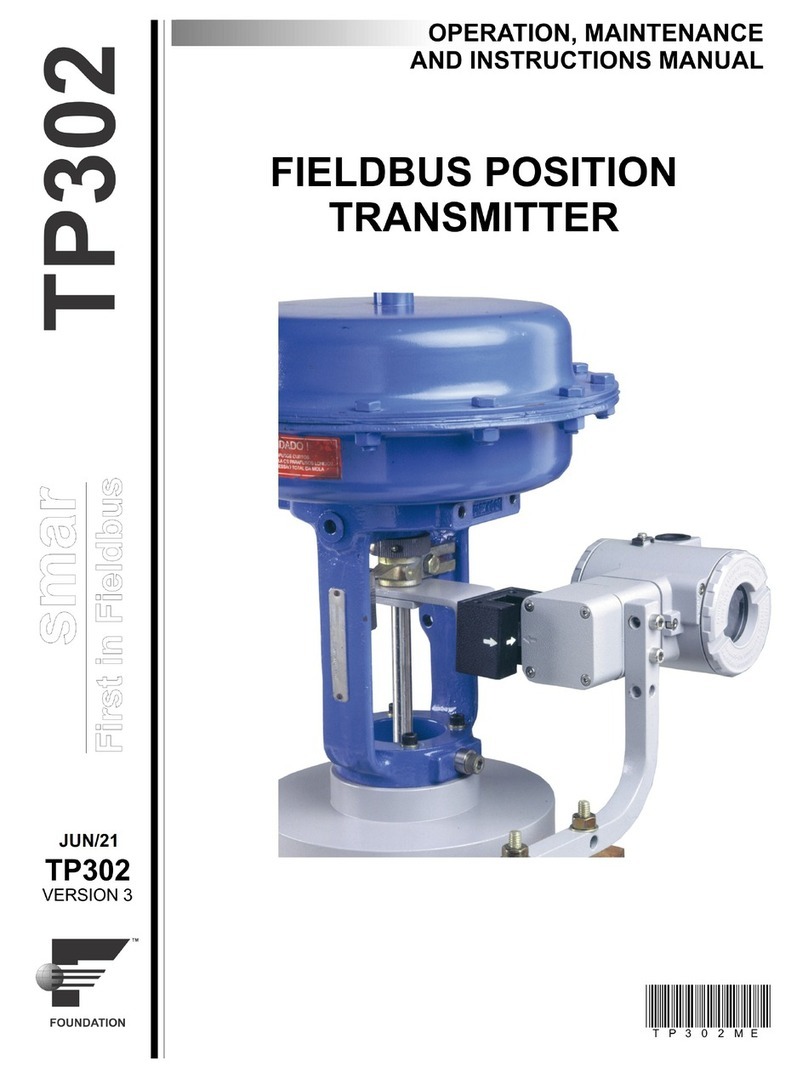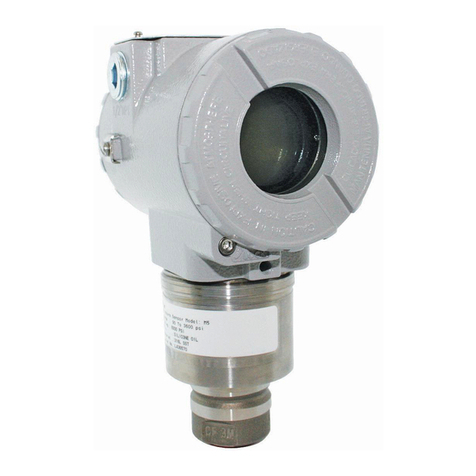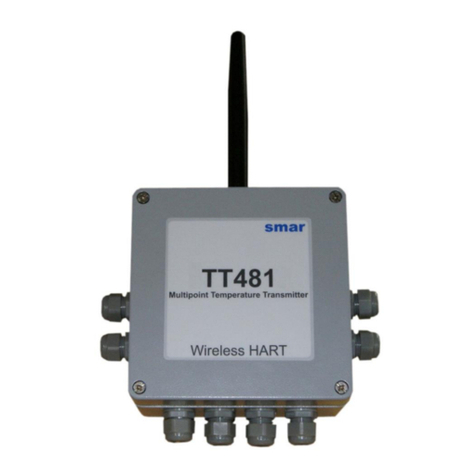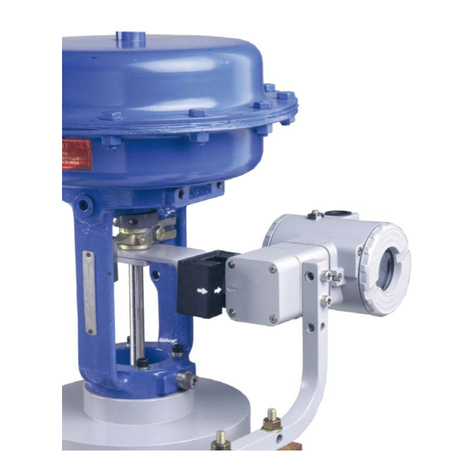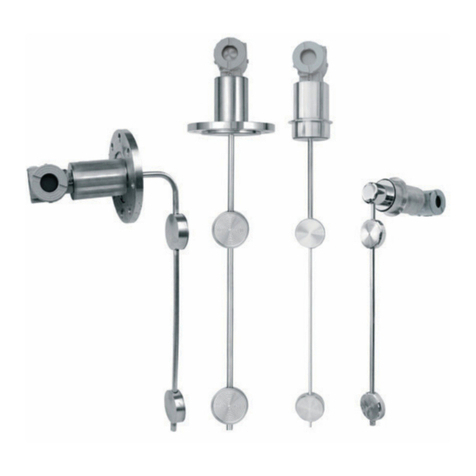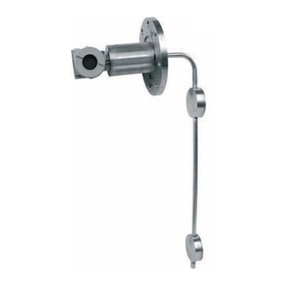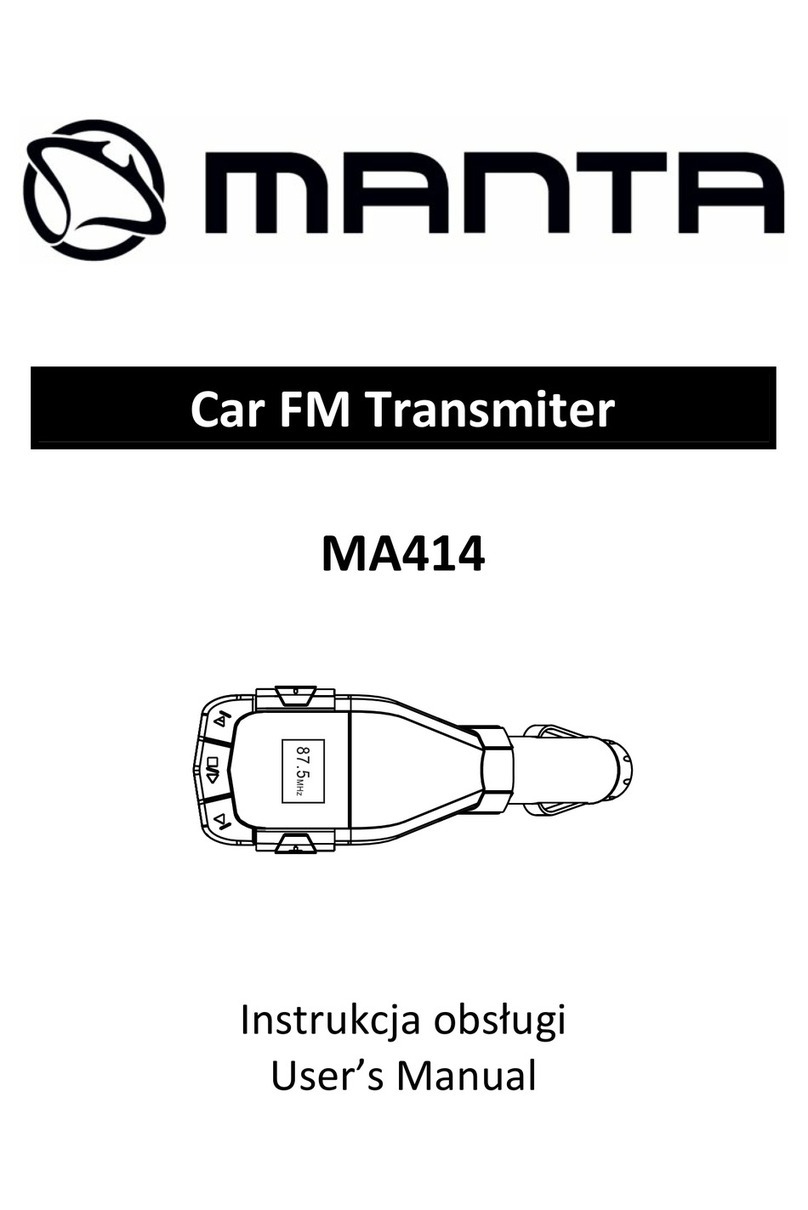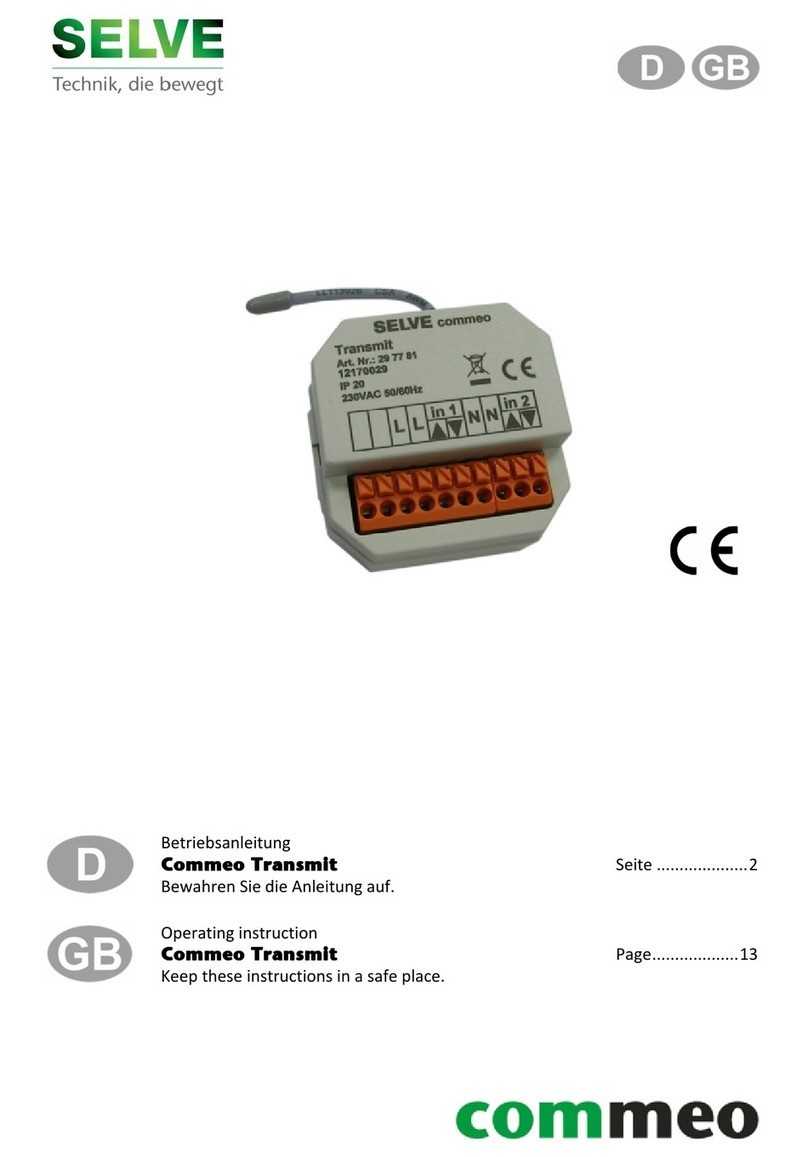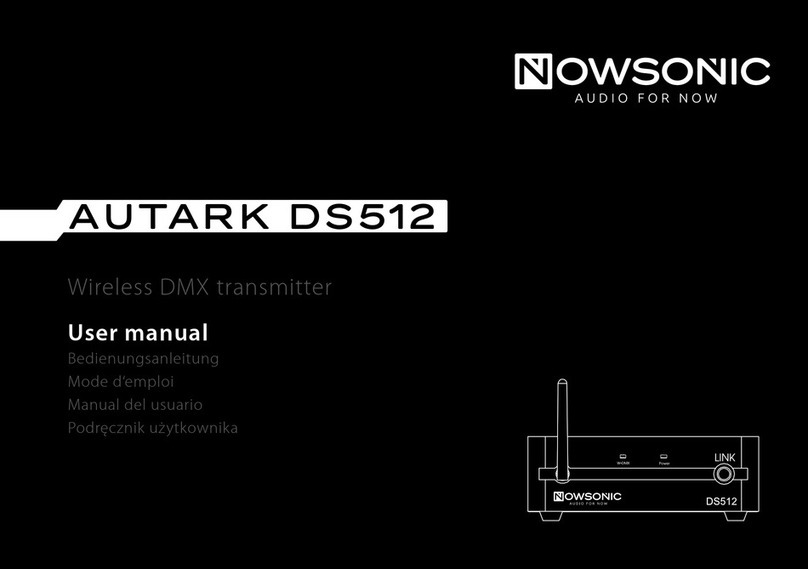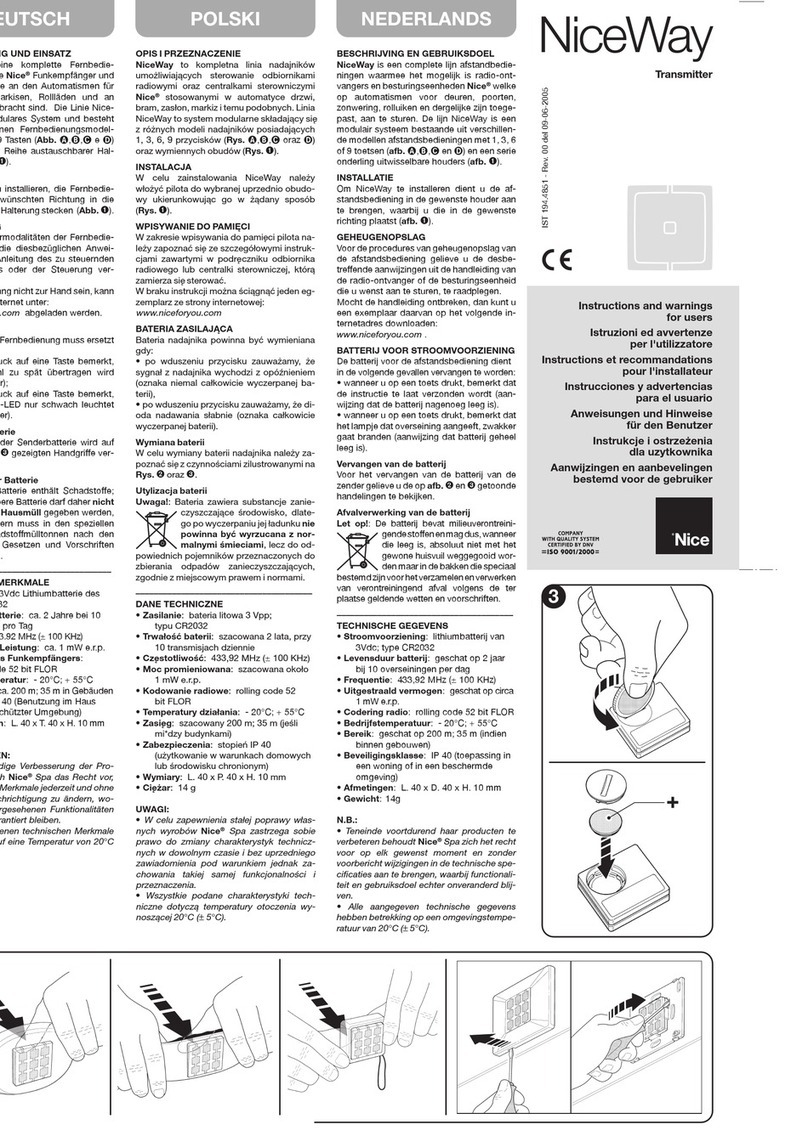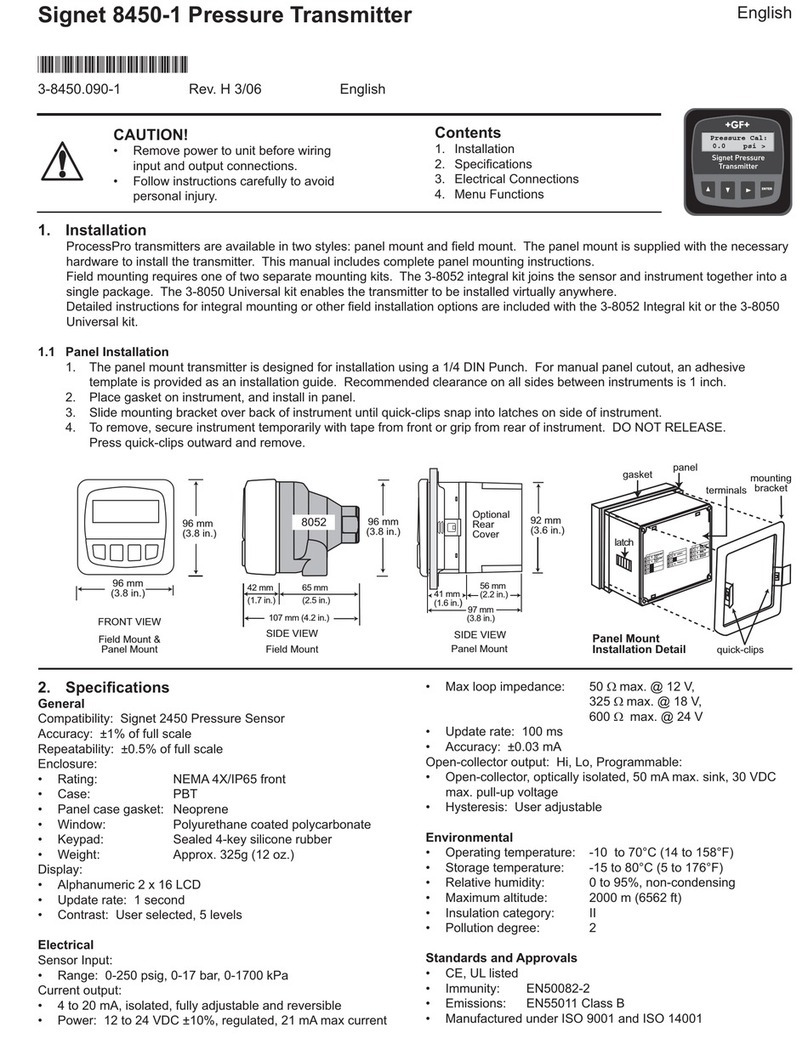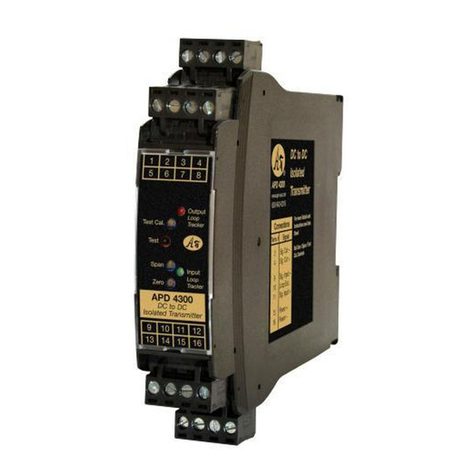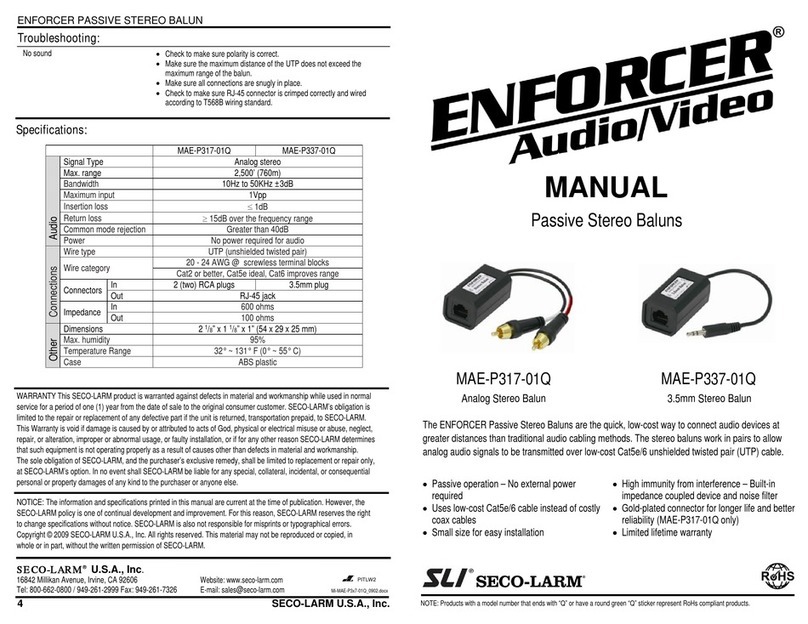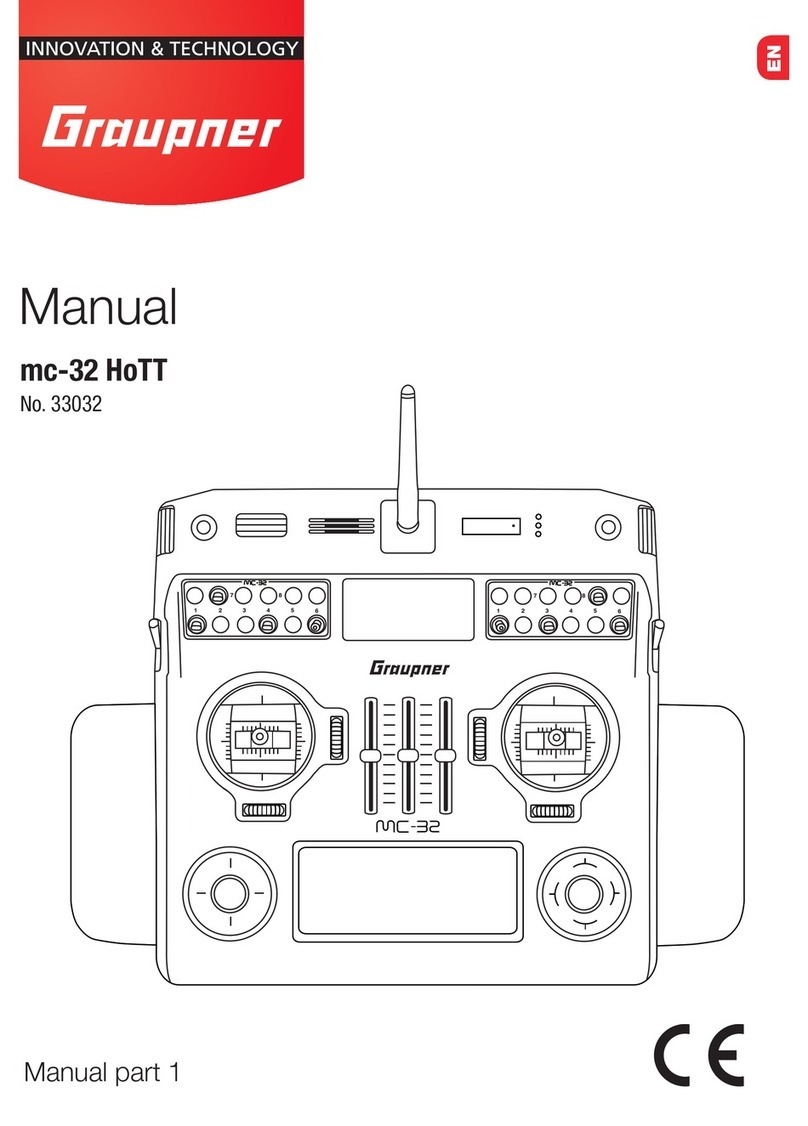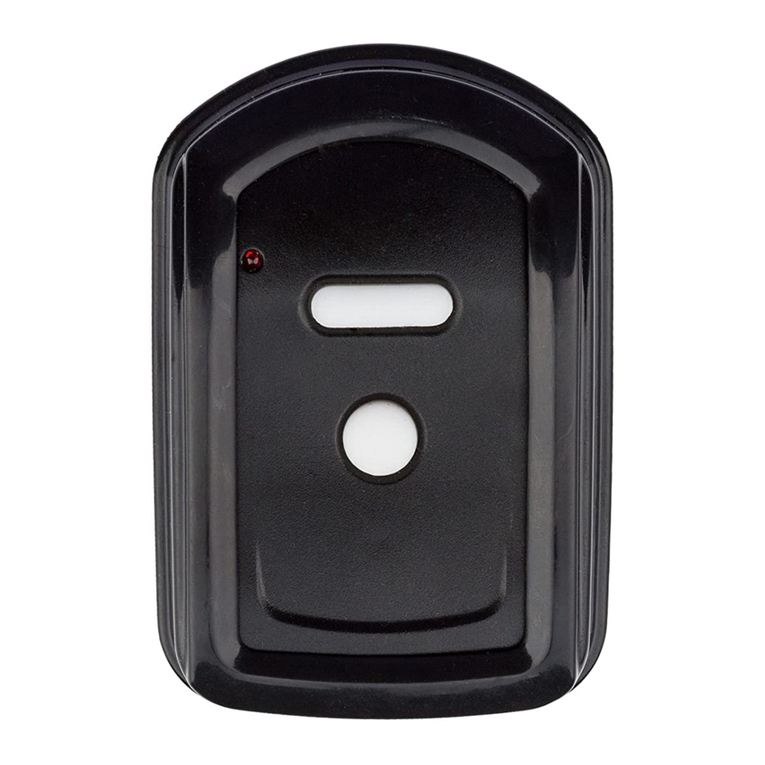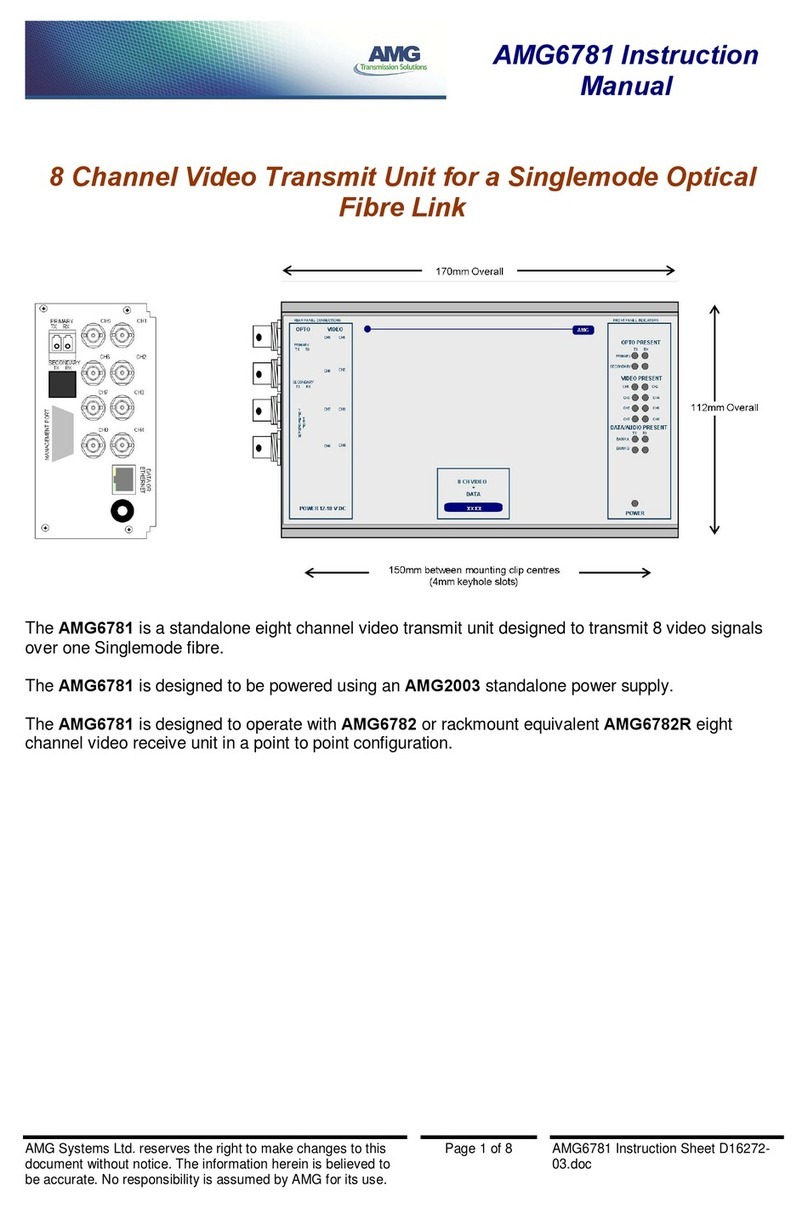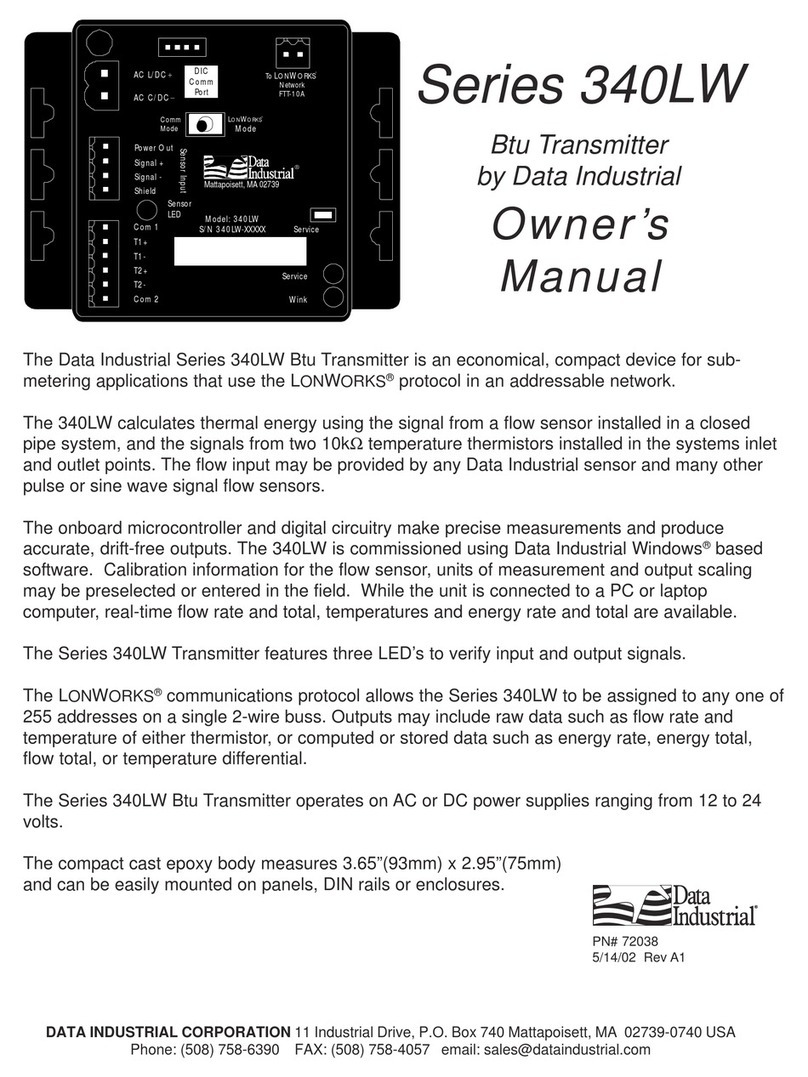SMAR TT303 Manual



Introduction
III
INTRODUCTION
The TT303 is from the first generation of Profibus PA devices. It is a transmitter mainly intended for
measurement of temperature using RTDs or thermocouples, but can also accept other sensors with
resistance or mV output such as: pyrometers, load cells, resistance position indicators, etc. The
digital technology used in the TT303 enables a single model to accept several types of sensors, an
easy interface between the field and the control room and several others features that considerably
reduces the installation, operation and maintenance costs.
The digital technology used in the TT303 enables the choice of several types of transfer functions,
an easy interface between the field and the control room and several interesting features that
considerably reduce the installation, operation and maintenance costs.
The TT303 is part of Smar's complete 303 line of Profibus-PA devices.
Some of the advantages of bi-directional digital communications are known from existing smart
transmitter protocols: Higher accuracy, multi-variable access, remote configuration and diagnostics,
and multi-dropping of several devices on a single pair of wires.
The system controls variable sampling, algorithm execution and communication so as to optimize
the usage of the network, not loosing time. Thus, high closed loop performance is achieved.
Using Profibus technology, with its capability to interconnect several devices, very large control
schemes can be constructed. In order too be user friendly the function block concept was
introduced.
The TT303, like the rest of the 303 family, has some Function Blocks built in, like Analog Input.
The need for implementation of Fieldbus in small as well as large systems was considered when
developing the entire 303 line of Profibus-PA devices. They have common features and can
configured locally using a magnetic tool, eliminating the need for a configuration tool or console in
many basic applications.
Now, thanks to Fieldbus, the transmitter accepts two channels, i.e., two measurements. This
reduces the cost per channel. Other function blocks are also available. They allow flexibility in
control strategy implementation.
Get the best result of the TT303 by carefully reading these instructions.
WARNING
In case of using Simatic PDM as the configuration and parameterization tool, Smar recommends that
the user does not apply the option "Download to Device". This function can
improperly configure the field device. Smar recommends that user make the use of the option
"Download to PG / PC" and then selecting the Device Menu, use the menus of the transducer,
function and display blocks acting specifically, according to each menu and method for reading and
writing.

TT303 –Operation and Maintenance Instruction Manual
IV
Waiver of responsibility
The contents of this manual abides by the hardware and software used on the current equipment
version. Eventually there may occur divergencies between this manual and the equipment. The
information from this document are periodically reviewed and the necessary or identified corrections
will be included in the following editions. Suggestions for their improvement are welcome.
Warning
For more objectivity and clarity, this manual does not contain all the detailed information on the
product and, in addition, it does not cover every possible mounting, operation or maintenance
cases.
Before installing and utilizing the equipment, check if the model of the acquired equipment complies
with the technical requirements for the application. This checking is the user’s responsibility.
If the user needs more information, or on the event of specific problems not specified or treated in
this manual, the information should be sought from Smar. Furthermore, the user recognizes that the
contents of this manual by no means modify past or present agreements, confirmation or judicial
relationship, in whole or in part.
All of Smar’s obligation result from the purchasing agreement signed between the parties, which
includes the complete and sole valid warranty term. Contractual clauses related to the warranty are
not limited nor extended by virtue of the technical information contained in this manual.
Only qualified personnel are allowed to participate in the activities of mounting, electrical connection,
startup and maintenance of the equipment. Qualified personnel are understood to be the persons
familiar with the mounting, electrical connection, startup and operation of the equipment or other
similar apparatus that are technically fit for their work. Smar provides specific training to instruct and
qualify such professionals. However, each country must comply with the local safety procedures,
legal provisions and regulations for the mounting and operation of electrical installations, as well as
with the laws and regulations on classified areas, such as intrinsic safety, explosion proof, increased
safety and instrumented safety systems, among others.
The user is responsible for the incorrect or inadequate handling of equipments run with pneumatic
or hydraulic pressure or, still, subject to corrosive, aggressive or combustible products, since their
utilization may cause severe bodily harm and/or material damages.
The field equipment referred to in this manual, when acquired for classified or hazardous areas, has
its certification void when having its parts replaced or interchanged without functional and approval
tests by Smar or any of Smar authorized dealers, which are the competent companies for certifying
that the equipment in its entirety meets the applicable standards and regulations. The same is true
when converting the equipment of a communication protocol to another. In this case, it is necessary
sending the equipment to Smar or any of its authorized dealer. Moreover, the certificates are
different and the user is responsible for their correct use.
Always respect the instructions provided in the Manual. Smar is not responsible for any losses
and/or damages resulting from the inadequate use of its equipments. It is the user’s responsibility to
know and apply the safety practices in his country.
WARNING
This Manual is compatible with version 3.XX, where 3 note software version and XX software release. The
indication 3.XX means that this manual is compatible with any release of software version 3.

Table of Contents
V
TABLE OF CONTENTS
SECTION 1 - INSTALLATION ................................................................................................. 1.1
GENERAL........................................................................................................................................................................1.1
MOUNTING.....................................................................................................................................................................1.1
NETWORK WIRING........................................................................................................................................................1.1
SENSOR WIRING ...........................................................................................................................................................1.4
TOPOLOGY AND NETWORK CONFIGURATION..........................................................................................................1.6
INTRINSIC SAFETY BARRIER.......................................................................................................................................1.7
JUMPER CONFIGURATION...........................................................................................................................................1.7
POWER SUPPLY............................................................................................................................................................1.7
INSTALLATION IN HAZARDOUS AREAS......................................................................................................................1.8
EXPLOSION/FLAME PROOF .........................................................................................................................................1.8
INTRINSICALLY SAFE....................................................................................................................................................1.8
SECTION 2 - OPERATION ...................................................................................................... 2.1
FUNCTIONAL DESCRIPTION - HARDWARE ................................................................................................................. 2.1
TEMPERATURE SENSORS ............................................................................................................................................ 2.2
THE DISPLAY .................................................................................................................................................................. 2.5
MONITORING .................................................................................................................................................................. 2.5
ALARM ............................................................................................................................................................................. 2.6
SECTION 3 - CONFIGURATION ............................................................................................. 3.1
TRANSDUCER BLOCK.................................................................................................................................................... 3.1
HOW TO CONFIGURE A TRANSDUCER BLOCK .......................................................................................................... 3.1
FUNCTIONAL DIAGRAM OF THE TEMPERATURE TRANSDUCER BLOCK ................................................................ 3.2
TEMPERATURE TRANSDUCER BLOCK GENERAL PARAMETER DESCRIPTION..................................................... 3.2
TEMPERATURE TRANSDUCER BLOCK GENERAL PARAMETER ATTRIBUTES ....................................................... 3.5
TT303 - CYCLIC CONFIGURATION................................................................................................................................ 3.6
SENSOR TRANSDUCER NUMBER .............................................................................................................................. 3.10
JUMPER CONFIGURATION.......................................................................................................................................... 3.11
HOW TO CONNECT TWO SENSORS........................................................................................................................... 3.12
COMPENSATION OF LINE RESISTANCE FOR RTD DOUBLE SENSOR OR OHM SENSOR.................................... 3.12
COMPENSATION OF COLD JUNCTION....................................................................................................................... 3.12
CALIBRATION IN TT303 BY THE USER....................................................................................................................... 3.12
HOW TO CONFIGURE THE ANALOG INPUT BLOCK.................................................................................................. 3.14
PROGRAMMING USING LOCAL ADJUSTMENT.......................................................................................................... 3.17
LOCAL ADJUSTMENT TREE - QUICK GUIDE.............................................................................................................. 3.19
J1 JUMPER CONNECTIONS......................................................................................................................................... 3.20
W1 JUMPER CONNECTIONS ....................................................................................................................................... 3.20
LOCAL PROGRAMMING TREE..................................................................................................................................... 3.20
TRANSDUCER DISPLAY –CONFIGURATION............................................................................................................. 3.22
DISPLAY TRANSDUCER BLOCK.................................................................................................................................. 3.23
DEFINITION OF PARAMETERS AND VALUES ............................................................................................................ 3.24
SECTION 4 - MAINTENANCE PROCEDURES....................................................................... 4.1
TROUBLESHOOTING...................................................................................................................................................... 4.1
DISASSEMBLY PROCEDURE......................................................................................................................................... 4.2
SENSOR ..........................................................................................................................................................................................4.2
ELECTRONIC CIRCUITS.................................................................................................................................................................4.2
REASSEMBLE PROCEDURE.......................................................................................................................................... 4.2
INTERCHANGEABILITY .................................................................................................................................................. 4.2
RETURNING MATERIALS ............................................................................................................................................... 4.3
SECTION 5 - TECHNICAL CHARACTERISTIC ...................................................................... 5.1
ORDERING CODE........................................................................................................................................................... 5.4
APPENDIX A - CERTIFICATIONS INFORMATION ................................................................A.1
APPENDIX B –SRF –SERVICE REQUEST FORM ...............................................................B.1

Installation Flowchart
VI
Installation Flowchart
Yes
Was the transmitter
configured on the bench
to match the application?
Configure the range and unit
(AI block)
Simule the value(s)
of the work range in the sensor(s)
conection terminal(s)
mV or Ohm
Start
No
No
OK
Yes
No
Yes
No
Yes
Configure the
1 and
3 - Configuration)
sensor and its
connections (Section
Section
Configure the measuring type
(differantial, dual, backup, or single)
Configure the Damping (AI block)
(Section 3 - Configuration)
Configure the LCD reading
(Section 3 - Configuration)
See manual
(Section 5 - Maintenance)
Is the reading correct?
Check the area classification
and its practices.
Install the transmitter preferably
on weather- protected areas.
Install the transmitter
(mechanically and electrically)
according to the application after
checking the best position for the LCD
(Section 5 - Maintenance)
Power the transmitter properly.
Is the transmitter
reading correct?
Do lower and upper trimTrim
Did you correct the
transmitter reading?

Section 1
1.1
INSTALLATION
General
The overall accuracy of temperature and other measurements depends on several variables.
Although the transmitter has an outstanding performance, proper installation is essential in order to
maximize its performance.
Among all factors which may affect transmitter accuracy, environmental conditions are the most
difficult to control. There are, however, ways of reducing the effects of temperature, humidity and
vibration.
Locating the transmitter in areas protected from extreme environmental changes can minimize
temperature fluctuation effects.
In warm environments, the transmitter should be installed in such a way as to avoid, as much as
possible, direct exposure to the sun. Installation close to lines and vessels subjected to high
temperatures should also be avoided. For temperature measurements, sensors with cooling-neck
can be used or the sensor can be mounted separately from the transmitter housing.
Use of sunshades or heat shields to protect the transmitter from external heat sources should be
considered.
Humidity is fatal for electronic circuits. In areas subjected to high relative humidity, the O-rings for
the electronic housing covers must be correctly placed and the covers must be completely closed by
tightening them by hand until you feel the O-rings being compressed. Do not use tools to close the
covers. Removal of the electronics cover in the field should be reduced to the minimum necessary,
since each time it is removed, the circuits are exposed to humidity. The electronic circuit is protected
by a humidity proof coating, but frequent exposure to humidity may affect the protection provided. It
is also important to keep the covers tightened in place. Every time they are removed, the threads
are exposed to corrosion, as painting cannot protect these parts. Code-approved sealing methods
should be employed on conduit entering the transmitter.
Connecting the sensor as close to the transmitter as possible and using proper wires (See Section 2
- Operation), can decrease measurement error.
Mounting
The transmitter may be mounted in two basic ways:
Separated from the sensor, using optional mounting brackets.
Mounted on the sensor assembly.
It can be mounted in several different positions using the bracket, as shown in Figure 1.3. As shown
in Figure 1.3 one of the conduit inlets for electrical connection is used to mount the sensor integral
to the temperature transmitter.
For better visibility, the digital display may be rotated in steps of 90º (see Figure 4.1).
Network Wiring
Access the terminal block by removing the Electrical Connection Cover. This cover can be locked
closed by the cover locking screw (See Figure 1.1).To release the cover, rotate the locking screw
clockwise.

TT303 –Operation and Maintenance Instruction Manual
1.2
COVER
LOCKING
SCREW
Figure 1.1 - Cover Locking
Cable access to wiring connections are obtained by one of the two conduit outlets. Conduit threads
should be sealed by means of code-approved sealing methods. The unused outlet connection
should be plugged accordingly.
The wiring block has screws on which fork or ring type terminals can be fastened (see Figure 1.2).
Figure 1.2 - Ground Terminals
For convenience, there are three ground terminals: one inside the cover and two externally,
located close to the conduit entries.
WARNING
Do not connect the Fieldbus network wires to the sensor terminals. (Terminals 1, 2, 3 and 4).
ALLOW 150 MM MINIMUM FOR LOCAL
ZERO AND SPAN ADJUSTMENT WITH
MAGNETIC TOOL.
COMMUNICATIONS
TERMINAL
PLUG
CONDUIT
CONNECTION
MOUNTING BRACKET
PIPE 2"
PLUG
WALL OR
PANEL MOUNTING
FOR WALL MOUNTING
2 EXPANSION ANCHOR -
2 HEXAGON SCREW - S8
3/16”X70
2 BOLT AND NUTS - 1/4”X30
NOT INCLUDED
FOR PANEL MOUNTING
Figure 1.3 - Dimensional Drawing and Mounting Positions
POWER SUPPLY
AND COMMUNICATION
(FIELDBUS NETWORK)
TERMINALS
AUXILIARY
COMMUNICATION
TERMINALS
GROUND
TERMINALS
+
1 2 3 4
+
COMM

Installation
1.3
The TT303 uses the 31.25-kbit/s, voltage mode option for the physical signaling. All other devices
on the same bus must use the same signaling. All devices are connected in parallel along the same
pair of wires.
Various types of Fieldbus devices may be connected on the same bus. The TT303 is powered via
the bus. The limit for such devices is according to the DP/PA coupler limitations for one bus for non-
intrinsically safe requirement.
In hazardous areas, the number of devices may be limited intrinsically safe restrictions, according to
the DP/PA coupler and barriers limitations.
The TT303 is protected against reverse polarity, and can withstand ±35 VDC without damage, but it
will not operate when in reverse polarity.
Use of twisted pair cables is recommended. It is also recommended to ground shield of shielded
cables at one end only. The non-grounded end must be carefully isolated.
NOTE
Please refer to the General Installation, Operation and Maintenance Procedures Manual for more
details.
The Figure 1.4 shows the correct installation of the conduit, in order to avoid penetration of water, or
other substance, which may cause malfunctioning of the equipment.
CORRECT
WIRES INCORRECT
Figure 1.4 - Conduit Installation Diagram
Sensor Wiring
The TT303 accepts up to two sensors and may operate in one of three modes:
Single channel single sensor measurement;
Dual channel dual sensor measurement;
Single channel dual sensor differential measurement;
Single channel dual sensor backup measurement;
NOTE
Avoid routing sensor wiring close to power cables or switching equipment.
In accordance with connection and sensor types, the terminal blocks shall be wired as shown on the
figure 1.5.

TT303 –Operation and Maintenance Instruction Manual
1.4
2 - WIRE RTD OR OHM INPUT
4 - WIRE RTD OR OHM INPUT
DUAL OR DIFFERENTIAL
RTD OR OHM INPUT DUAL OR DIFFERENTIAL
THERMOCOUPLE OR
MILLIVOLT INPUT
THERMOCOUPLE
INPUT MILLIVOLT INPUT
3 - WIRE RTD OR OHM INPUT
1 2 3 4
1 2 3 4 1 2 3 4 1 2 3 4
1 2 3 4
1 2 3 4
1 2
DUAL OR DIFFERENCTIAL
RTD AND TC INPUT
3 41 2 3 4
10 M
DUAL OR DIFFERENTIAL
RTD AND TC INPUT
++
1 2
10 M
3 4
+
+
++
Figure 1.5 - Sensor Wiring

Installation
1.5
Topology and Network Configuration
Bus topology (see Figures 1.6 and 1.7) are supported. Both types have a trunk cable with two
terminations. The devices are connected to the trunk via spurs. The spurs may be integrated in the
device giving zero spur length. A spur may connect more than one device, depending on the length.
Active couplers may be used to extend spur length.
Active repeaters may be used to extend the trunk length.
The total cable length, including spurs, between any two devices in the Fieldbus should not exceed
1900 m.
The connection of couplers should be kept less than 15 per 250 m. In following figures the
DP/PA link depends on the application needs.
JUNCTION
BOX SHIELD
SPUR
SPUR SPUR
TERMINATOR
Analog
Ground
+
-+
-
Figure 1.6 - Bus Topology
Analog
Ground
+
-
+
-
JUNCTION
BOX
TERMINATOR
COUPLER
Figure 1.7 - Tree Topology

TT303 –Operation and Maintenance Instruction Manual
1.6
Intrinsic Safety Barrier
When the Fieldbus is in an area requiring intrinsic safety, a barrier must be inserted on the trunk
between the power supply and the DP/PA coupler, when it is Non-Ex type.
Use of DF47 is recommended.
Jumper Configuration
In order to work properly, the jumpers J1 and W1 located in the TT303 main board must be correctly
configured (See Table 1.1).
J1
This jumper enables the simulation mode parameter in the AI block.
W1
This jumper enables the local adjustment programming tree.
Table 1.1 - Description of the Jumpers
Power Supply
The TT303 receives power from the bus via the signal wiring. The power supply may come from a
separate unit or from another device such as a controller or DCS.
The voltage should be between 9 to 32 Vdc for non-intrinsic safe applications.
A special requirement applies to the power supply used in an intrinsically safe bus and depends on
the type of barrier used.
Use of PS302 is recommended as power supply.

Installation
1.7
Installation in Hazardous Areas
WARNING
Explosions could result in death or serious injury, besides financial damage. Installation of this
transmitter in explosive areas must be carried out in accordance with the local standards and the
protection type adopted .Before continuing the installation make sure the certificate parameters are
in accordance with the classified area where the equipment will be installed.
The instrument modification or parts replacement supplied by other than authorized representative
of Smar is prohibited and will void the certification.
The transmitters are marked with options of the protection type. The certification is valid only when
the protection type is indicated by the user. Once a particular type of protection is selected, any
other type of protection can not be used.
Explosion/Flame Proof
WARNING
Only use Explosion Proof/Flameproof certified Plugs, Adapters and Cable glands.
In Explosion-Proof installations the cable entries must be connected or closed using metal cable
gland and metal blanking plug, both with at least IP66 and Ex-d certification.
The standard plugs provided by Smar are certified according to CEPEL certificate. If the plug
needs to be replaced, a certified plug must be used.
The electrical connection with NPT thread must use waterproofing sealant. A non-hardening
silicone sealant is recommended.
For NEMKO ATEX certificate please to follow the installation guidelines in hazardous locations
below: Group II Category 2G, Ex d, Group IIC, Temperature Class T6, EPL Gb U = 28VDC
Ambient Temperature: -20 to 60ºC for T6
Environmental Protection: IP66/687 or IP66W/687W
The electrical connection available are ½ - 14NPT and M20x1,5.
Cable entries must be connected or closed using metal cable gland and metal blanking plug, both
with at least IP66 and Ex-d certification or any appropriate ATEX approved metal cable gland and
metal blanking plug. Do not remove the transmitter covers when power is ON.
Intrinsically Safe
WARNING
In hazardous zones with intrinsically safe or non-incendive requirements, the circuit entity
parameters and applicable installation procedures must be observed.
To protect the application the transmitter must be connected to a barrier. Match the parameters
between barrier and the equipment (Consider the cable parameters). Associated apparatus ground
bus shall be insulated from panels and mounting enclosures. Shield is optional. If used, be sure to
insulate the end not grounded. Cable capacitance and inductance plus Ci and Li must be smaller
than Co and Lo of the associated Apparatus.
It is not recommended to remove the transmitter cover when the power is ON.

TT303 –Operation and Maintenance Instruction Manual
1.8

Section 2
2.1
OPERATION
The TT303 accepts signals from mV generators such as thermocouples or resistive sensors such as
RTDs. The criterion is that the signal is within the range of the input. For mV, the range is -50 to 500
mV and for resistance, 0-2000 Ohm.
Functional Description - Hardware
The function of each block is described below.
Figure 2.1 - TT303 Block Diagram
MUX Multiplexer
The MUX multiplexes the sensor terminals to the signal conditioning section ensuring that the
voltages are measured between the correct terminals.
Signal Conditioner
Its function is to apply the correct gain to the input signals to make them suit the A/D - converter.
A/D Converter
The A/D converts the input signal to a digital format for the CPU.
Signal Isolation
Its function is to isolate the control and data signal between the input and the CPU.
(CPU) Central Processing Unit, RAM, PROM and EEPROM
The CPU is the intelligent portion of the transmitter, being responsible for the management and
operation of measurement, block execution, self-diagnostics and communication. The program is
stored in a PROM. For temporary storage of data there is a RAM. The data in the RAM is lost if the
power is switched off. However there is a nonvolatile EEPROM where data that must be retained is
stored. Examples, of such data are trim, calibration, block configuration and identification data.
Communication Controller
It monitors line activity, modulates and demodulates communication signals and inserts and deletes
start and end delimiters.

TT303 –Operation and Maintenance Instruction Manual
2.2
Power Supply
Takes power of the loop-line to power the transmitter circuitry.
Power Isolation
Just like the signals to and from the input section, the power to the input section must be isolated.
Isolation is achieved by converting the DC supply into a high frequency AC supply and galvanically
separating it using a transformer.
Display Controller
Receives data from the CPU informing which segments of the Liquid Crystal Display, should be
turned on.
Local Adjustment
There are two switches that are magnetically activated. They can be activated by the magnetic tool
without mechanical or electrical contact.
Figure 2.2 - LCD Indicator
Temperature Sensors
The TT303, as previously explained, accepts several types of sensors. The TT303 is specially
designed for temperature measurement using thermocouples or Resistive Temperature Detectors
(RTDs).
Some basic concepts about these sensors are presented below.
Thermocouples
Thermocouples are constructed with two wires made from different metals or alloys joined at one
end, called measuring junction or "hot junction". The measuring junction should be placed at the
point of measurement. The other end of the thermocouple is open and connected to the temperature
transmitter. This point is called reference junction or cold junction.
For most applications, the Seebeck effect is sufficient to explain thermocouple behavior as
following:
How the Thermocouple Works (Seebeck Effect)
When there is a temperature difference along a metal wire, a small electric potential, unique to every
alloy, will occur. This phenomenon is called Seebeck effect. When two wires of dissimilar metals are
joined at one end, and left open at the other, a temperature difference between the two ends will
result in a voltage since the potentials generated by the dissimilar materials are different and do not
cancel each other out. Now, two important things must be noted. First: the voltage generated by the
thermocouple is proportional to the difference between the measuring-junction and the cold junction
temperatures.

Operation
2.3
Therefore the temperature at the reference junction must be added to the temperature derived from
the thermocouple output, in order to find the temperature measured. This is called cold junction
compensation, and is done automatically by the TT303, which has a temperature sensor at the
sensor terminals for this purpose. Secondly, if the thermocouple wires are not used, all the way to
the terminals of the transmitter (e.g., copper wire is used from sensor-head or marshaling box) will
form new junctions with additional Seebeck effects. It will be created and ruin the measurement in
most cases, since the cold-junction compensation will be done at the wrong point.
NOTE
Use thermocouple wires or appropriate extension wires all the way from sensor to transmitter.
The relation between the measuring junction temperature and the generated millivoltage is tabulated
in thermocouple calibration tables for standardized thermocouple types, the reference temperature
being 0C.
Standardized thermocouples that are commercially used, whose tables are stored in the memory of
the TT303, are the following:
NBS (B, E, J, K, N, R, S & T)
DIN (L & U)
Resistive Temperature Detectors (RTDs)
Resistance Temperature Detectors, most commonly known as RTD’s, are based on the principle
that the resistance of metal increases as its temperature increases.
Standardized RTDs, whose tables are stored in the memory of the TT303, are the following:
JIS [1604-81] (Pt50 & Pt100)
IEC, DIN, JIS [1604-89] (Pt50, Pt100 & Pt500)
GE (Cu10)
DIN (Ni120)
For correct measurement of RTD temperature, it is necessary to eliminate the effect of the
resistance of the wires connecting the sensor to the measuring circuit. In some industrial
applications, these wires may be hundreds of meters long. This is particularly important at locations
where the ambient temperature changes constantly.
The TT303 permits a 2-wire connection that may cause measuring errors, depending on the length
of connection wires and on the temperature to which they are exposed. (see Figure 2.3).
In a 2-wire connection, the voltage V2 is proportional to the RTD resistance plus the resistance of
the wires.
V2 = [RTD + 2 x R] x I
R
V2
TRANSMITTER
2,1
3,4 R
RTD
I
Figure 2.3 - Two-Wire Connection
In order to avoid the resistance effect of the connection wires, it is recommended to use a 3-wire
connection (see Figure 2.4) or a 4-wire connection (see Figure 2.5).
In a 3-wire connection, terminal 3 is a high impedance input. Thus, no current flows through that
wire and no voltage drop is caused. The voltage V2-V1 is independent of the wire resistances since
they will be cancelled, and is directly proportional to the RTD resistance alone.

TT303 –Operation and Maintenance Instruction Manual
2.4
V2-V1 = [RTD + R] x I - R x I = RTD x I
R
V2
V1
TRANSMITTER
2,1
4
3
R
RTD
I
Figure 2.4 - Three –Wire Connection
In a 4-wire connection, terminals 2 and 3 are high impedance inputs. Thus, no current flows through
those wires and no voltage drop is caused. The resistance of the other two wires is not of interest,
since there is no measurement registered on them. Hence the voltage V2 is directly proportional to
the RTD resistance.
(V2 = RTD x I)
R
V2
2
1
+
-3
4
R
RTD
TRANSMITTER
I
Figure 2.5 - Four - Wire Connection
A differential or dual channel connection is similar to the two-wire connection and gives the same
problem (See Figure 2.6). The resistance of the wires will be measured and do not cancel each
other out in a temperature measurement, since linearization will affect them differently.
TRANSMITTER 1,3 R
R
R
2
4
V1 V2 RTD2
RTD1
I
I
Figure 2.6 - Differential or Dual Connection

Operation
2.5
The Display
The digital indicator is able to display one or two variables which are user selectable. When two
variables are chosen, the display will alternate between the two with an interval of 3 seconds.
The different fields and status indicators are explained in Figure 2.7.
* PID IS OPTIONAL
M
A
Fix F(t)
PID
SP
F(x) 35
PV
min
ACK
INDICATES THAT THE DISPLAYED
ALARM HAS NOT YET BEEN ACKNOWLEDGED
INDICATES ACTIVE SPECIAL
SENSOR LINEARIZATION
( NOT USED ON TT301 )
VARIABLE FIELD
UNIT PERCENT
UNIT MINUTES
UNITAND FUNCTION FIELD
INDICATES THAT THE PROCESS
VARIABLE IS NOW DISPLAYED
INDICATES ACTIVE
MULTIDROP MODE
INDICATES ACTIVE
SETPOINT GENERATOR *
INDICATE PID
CONTROLLER MODE *
INDICATES ACTIVE
CONSTANT OUTPUT MODE
INDICATES CONTROLLER
IN AUTOMATIC *
INDICATES CONTROLLER
IN MANUAL *
INDICATES POSSIBILITY
TO ADJUST / CHANGE
VARIABLE / MODE
INDICATES THAT
THE SETPOINT
IS NOW DISPLAYED *
Figure 2.7 –Typical Monitoring Mode Display
Monitoring
During normal operation, the TT303 is in the monitoring mode. In this mode, indication alternates
between the primary and secondary variable as configured in DISPLAY. See Figure 2.8.
The display indicates engineering units, values and parameters simultaneously with most status
indicators. The monitoring mode is interrupted in two situations:
User performs complete local adjustment.
An alarm is activated.
Figure 2.7 –Display

TT303 –Operation and Maintenance Instruction Manual
2.6
Alarm
The two alarms are software alarms and have no contacts available on the transmitter. The alarms
are acknowledged by using the Local Adjustment or the Configurator, which can view and configure
alarms as well - see further Section III. During an alarm, the display will indicate which alarm has
been activated and if it has been acknowledged or not.
The transmitter display also indicates the alarms status as shown in Figure 2.9.
AL H means High Alarm, AL L means Low Alarm and ALO indicates Burnout failure. The ACK
indicates that the alarm has not yet been acknowledged.
When the alarm condition disappears, the "ACK" is switched off and the display returns to
monitoring mode.
For further information on alarm configuration, see Section III - Programming Using Terminal.
ALARM 1
ALARM 2
Figure 2.9 –Typical Alarm Condition Display
This manual suits for next models
1
Table of contents
Other SMAR Transmitter manuals

